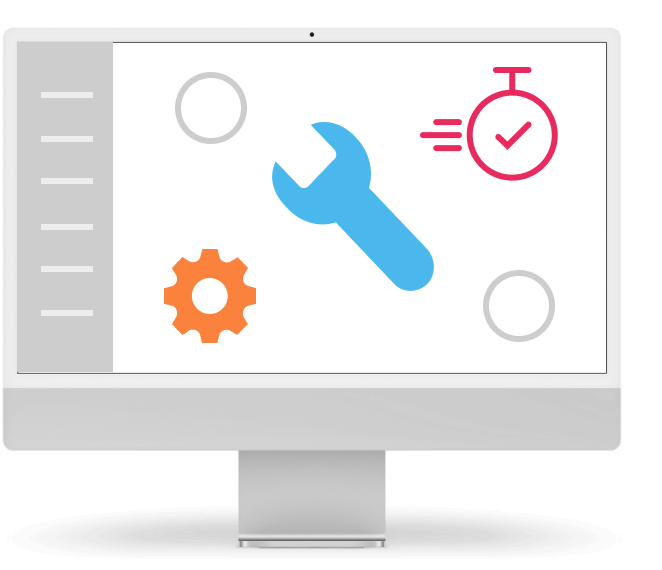How Can You Scale Various Types of Infrastructure?
Content
Scalability – a word that keeps floating around us in companies every day.
Especially when you work in IT, then you scale where you can. But what does scalability really include, how is it done and, most importantly, how can you use it to the fullest in your company with your type of infrastructure. All the answers are in this article.
What Is Scalability?
As the title suggests, scalability is related to the ability to increase functionality. No coontemporary comapny stays the same for decades. They implement new systems, automate anything that can be automated and switch from one type of infrastructure to the next. All of that with one goal – to optimize operations and costs.
What Kinds of Scalability Can We Use?
In human terms – up or to the sides. Or both. If scalability follow the x axis, then it is horizontal. If it follows the y axis, it is vertical. What is the difference?
horizontal scalability
If we scale along the x axis, it means our infrastructure is growing thanks to additional machines. We are just expressing a process of additional server procurement. That increases the options to deploy additional systems or ensure their backup on a different level. It does not equal changing the current devices but adding to the current ones.
vertical scalability
If we follow the y axis, we are inflating our current equipment. Computing devices within the company infrastructure receive higher computing capacity – physical and virtual.
Is Your Infrastructure Compatible with Scalability?
The answer can also be no. It could happen that your device cannot be scaled in a certainn aspect. We summarize the results regarding each infrastřructure type.
physical servers
Let’s start from the oldest. Physical servers are still to this day a popular artefact of IT departments. Their ability to scale is limited in the vertical aspect. Your server composed of components that ensure the ability to compute. It has a certain configuration and also specific potential how to work with these components.
For instance, a server is designed in a way to have the RAM swaped for higher efficiency. Or you can add another component which increases the computing abilities. But that is it. A physical server has limits that cannot be breached. You can get to a state when vertical scalability is no longer possible because you reach these limits.
And then you are left with the option to scale horizontally and buy another server. And that leads you to the same dead end. No physical server is immune to its limits.
virtual private servers (VPS)
Even though we are talking about VPS, we are practically on the samme spot as with the physical server. And actually even worse. Virtual private servers come with a rigid configuration that cannot be changed once you accept it. You can also forget any component swaps – a virtual server stays the same way until you cancel it.
So your option is to purchase additional virtual servers but even here comes a problem compared to the physical servers – networking. Physcial servers can be connected via physical cabels and create your own network. With VPS from some providers, it is possible to proceed in this manner, but more often you encounter several VPS sitting next to each other but not talking to each other. You end up with a microcosmos of each server with each functioning autonomously and independently from the others.
virtual private data center (VPDC)
Now we are getting to infrastructure that does not fuss about scalability. Not even with the vertical kind. A great advantage compared to physical and virtual servers is the principle this type functions. Servers force you to choose a specific configuration of computing resources, VPDC just asks for a quantity of individual computing components. The configuration of servers is then dependent on your needs or current mood.
Thanks to this quality, it is easier not to add individual servers but also increase resources for individual machines that are already running.
private cloud
The build of this kind of infrastructure gets you to the beginning. Private cloud runs on physical servers that are dedicated to your commpany – so not as many as with the provider of public cloud.
Cloud is custom built (based on your project) and you have to fit in what it has to offer. But inside the cloud, you have the ability to vertically and horizontally scale as with the VPDC, just with set limits based on your project.
hybrid solutions and multicloud
Here we are entiring the area where basic scalability definitions no longer apply because the hybrid and multiclouud solutions can have various shapes and forms and can come from various providers. What matters then is the current architecture of the end service.
Why Should You Think about Scalability Right Away?
You are buying infrastructure for your company and you feel it is too soon to plan what your needs will be in 4 years. True that is not realistic. But you surely have a plan how you would like your company to grow, develop and where it should be heading. You can then estimate pretty accurately if the growth will be linear or more exponential, or even leaping.
Thanks to this outlook, you can then search for the type of infrastructure that can copy your plan the best. Then you can really get the best from scalability for it to provide you with optimization of functioning and costs.





